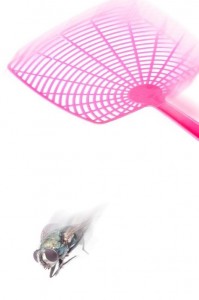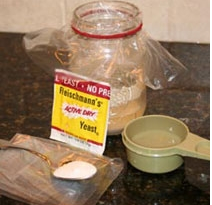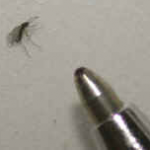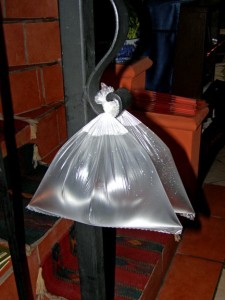 Most flies in nature are very important and serve vital functions. Mainly as food for other bugs and animals but also to help recycle things like animal feces and giving back precious nutrients to the soil. Also flies such as Blow Flies, Flesh Flies and others provide this same function for decomposing animal carcasses. It’s only when these flies bite humans or land on,eat and contaminate our foods thus spreading of germs that they become pests. Of all the insects that invade our homes, flies may be the most important in terms of our health and well being. In countries such as South Africa and other third world countries diseases like typhoid, paratyphoid, cholera, bacillary, dysentery, infantile diarrhea, pin worm, roundworm, whip worm, hookworm and tapeworm are spread throughout. Flies are so often found in areas of filth picking up pathogens on their feet and mouth parts. This is then transferred to human food through their vomit or by their feces onto our food. It’s also common that these types if illnesses can be transferred directly into an open wound or sore. The lack of sound sanitation, plumbing and pest control allow flies to flourish. Always in search of food no matter where it’s located and no matter what the condition, flies present a huge danger and challenge to mankind.
Most flies in nature are very important and serve vital functions. Mainly as food for other bugs and animals but also to help recycle things like animal feces and giving back precious nutrients to the soil. Also flies such as Blow Flies, Flesh Flies and others provide this same function for decomposing animal carcasses. It’s only when these flies bite humans or land on,eat and contaminate our foods thus spreading of germs that they become pests. Of all the insects that invade our homes, flies may be the most important in terms of our health and well being. In countries such as South Africa and other third world countries diseases like typhoid, paratyphoid, cholera, bacillary, dysentery, infantile diarrhea, pin worm, roundworm, whip worm, hookworm and tapeworm are spread throughout. Flies are so often found in areas of filth picking up pathogens on their feet and mouth parts. This is then transferred to human food through their vomit or by their feces onto our food. It’s also common that these types if illnesses can be transferred directly into an open wound or sore. The lack of sound sanitation, plumbing and pest control allow flies to flourish. Always in search of food no matter where it’s located and no matter what the condition, flies present a huge danger and challenge to mankind.
Control of flies consists of 3 major factors;
#1 Is identification. Certain flies such as Horse flies eat blood and nectar so scrubbing down your garbage cans will do little in your control effort of them where as for common House flies this will make a world of difference. We all get the occasional fly in our homes and perhaps a good swing with the newspaper or handy swatter will beat out a google search for that day. For persistent or reoccurring problems however identification will be key.

#3 Pest control. Whether it’s sticky traps, lures, lights, sprays or baits it’s certainly an integral part of any fly control program and one that you should be ready to use. Fly infestations can explode overnight making life miserable and put you and your families health at risk. I’ve seen even the staunchest ‘chemical free’ people load up with 6 or 7 spray bombs for their 1500 square foot homes just because the fly problem had gotten so huge and unrelenting. (not that you’ll need this once you’re armed with just a bit of knowledge)
There are alot of flies and gnats out there and I doubt most of us will deal with even a majority of them on any serious level. However I believe we ALL will face a fly control dilemma somewhere in our lives. This article will deal with Small Flies and Filth Flies which should cover almost anything you and I will see.
Small Flies
Fruit Flies. One of the most common in house problems he is a small little bugger only about 1/8 inch in length. A tan head and thorax but it’s red eyes are the most distinguishing mark you’ll see to identify this fly. There are several different species and they are found worldwide. They are also known as Pomace flies or Vinegar flies. One note this fly has been helpful to mankind in that early genetic research used fruit flies and that research is still considered foundational. It breeds and feeds on ripened fruits and vegetables as well as moist decaying organic matter.(which can be a long list of things) The female will lay some 500 hundred eggs near the surface of fermenting fruit or organic matter only to have the eggs hatch in about 30 hours. The larvae feed for 5 to 6 days then crawl to drier areas of the food source or even away from the source to pupate. Several days later the adult emerges. The entire cycle can take as little as 8 days.
Control of the fruit fly means looking for the food source. Sometimes this is not so easy. Just remember they must have ripened (rotting) fruit or organic material to complete their life cycle. So look for any fruit or vegetable that may fit this bill. Also they can feed and breed in fruit juices or beers and wine found in the bottom of un rinsed containers. Besides all the obvious make sure to look under the fridge, stove and other appliances as well as those potatoes or bananas at the ‘bottom’ of the pile. Trash cans. Cracks and crevices with even small amounts of material will suffice to sustain hundreds of fruit flies. Kitty litter boxes are also something to check. Once you find the source (usually you’ll find the larvae squirming about) wrap it up and throw it away. That may be all you’ll need to do at this point but any other fruit that is ripening is suspect and needs to be watched. You can use such ’space’ sprays like non-residual aerosols to kill adult flies or even a bug bomb in severe infestations. Probably a better mode of adult elimination is a trap. You can make  these yourself or purchase but either way you’ll need to put some type of fruit juice or beer as the bait. To make one take simply make a funnel out of paper, place the small end into a wide mouth jar ( such as a mason jar). Make sure the funnel doesn’t come to close to the bottom of the jar. Adjust by cutting if necessary. Remove the funnel and pour a small amount of fruit or orange juice into the jar.Beer works well too. Place the funnel back into place making sure the funnel covers the entire top lip of the jar. ( the flies will escape if any room between funnel and glass)
these yourself or purchase but either way you’ll need to put some type of fruit juice or beer as the bait. To make one take simply make a funnel out of paper, place the small end into a wide mouth jar ( such as a mason jar). Make sure the funnel doesn’t come to close to the bottom of the jar. Adjust by cutting if necessary. Remove the funnel and pour a small amount of fruit or orange juice into the jar.Beer works well too. Place the funnel back into place making sure the funnel covers the entire top lip of the jar. ( the flies will escape if any room between funnel and glass)
 You can also simply place plastic wrap over top of a glass with holes poked in it. If you don’t have any juice handy you may also use a slice of fruit or banana. Place the trap near the area where the flies are most noticed and perhaps another trap or two in other areas just in case. If flies continue you must look again and perhaps think ‘outside the box’ for the source. You’ll usually know within a few short hours if you’ve been successful.
You can also simply place plastic wrap over top of a glass with holes poked in it. If you don’t have any juice handy you may also use a slice of fruit or banana. Place the trap near the area where the flies are most noticed and perhaps another trap or two in other areas just in case. If flies continue you must look again and perhaps think ‘outside the box’ for the source. You’ll usually know within a few short hours if you’ve been successful.
Phorid Flies. similar to fruit flies they are found throughout the world, about 1/8 inch in length and are tannish in color. Phroid flies however do not have red eyes but do have a noticeable ‘hump’ on their backs. They feed mainly on decaying organic material and lay eggs in such suitable materials. Phroid flies are also called Coffin Flies because they are known to be found in mortuaries and mausoleums. Also a serious threat in hospitals since females will lay their eggs in open wounds. The female will lay up to 40 eggs in a 12 hour period. Approximately 24 hours later they will hatch. Usually the larvae will feed up to 18 days then crawl to a drier place to pupate. The entire cycle can be done in as little as 14 days but typically takes a month.
Controlling the Phroid Fly. As with the fruit fly check for the source. Phroid fly larvae can only live in moist organic matter. A favorite spot to check for them is the drains. If adult flies are found in the drains that’s a good sign they are there. If so the drain must be throughly cleaned. Other areas such as noted for fruit flies also apply and the same rules go for the Phroid fly.
Moth Flies. Another little guy about 1/8 inch in length. They are usually black in color but what makes them most identifiable is the presence of visible hairs over it’s wings and body making it look ‘moth like’. This guy is found almost always in drains and is sometimes called ‘Drain Fly’. The eggs are laid and the larvae live in that gelatinous film that you find in drains and sometimes on organic materials. The larvae breath by extending a breathing tube through the film. They feed about 15 days before pupating. The pupation period is pretty short and the entire cycle takes about 8 days. While Moth flies are not the most common to infest a home they can be tricky to completely get rid of so it can be chronic.
Control of Moth Flies. Sprays or traps generally are not needed for Moth flies, most often it’s sanitation. The drains are usually a great place to check. Adult flies are always a good sign you’re on to them. Also areas such as sump pumps, refrigerator condensation trays, the base of toilet bowls or bathtubs and showers. Once you have determined the source it must be cleaned thoroughly. Note; Just bleach or hot water will not render control. The gelatin type material must be removed or the larvae will survive to infest another day. Some relief can be had with a bleaching but it is usually short lived. In some cases the drain pipes may be cracked or broken even underground. This may make it impossible to get results. Before you rent a jack hammer please call a pro and get their opinion. It may be that you’ll need a earth breaking remedy but it’s at least possible you’ve missed something he or she will pick up on.
Fungus Gnats. Small little guy with long legs. Most species are less than 1/16 of  an inch long and black in color. Not as much is known about this gnat however we know they feed on fungus growing in moist organic material. This can usually be found in over watered plants in our homes. The adult lays eggs in such soil and the eggs hatch soon after. The larvae feed on the fungus for a time, pupate and emerge later as adults repeating the cycle.
an inch long and black in color. Not as much is known about this gnat however we know they feed on fungus growing in moist organic material. This can usually be found in over watered plants in our homes. The adult lays eggs in such soil and the eggs hatch soon after. The larvae feed on the fungus for a time, pupate and emerge later as adults repeating the cycle.
Control of the Fungus Gnat. Usually this is achieved by simply removing the plant and allowing it to dry out. In some cases you may need to replace the potted soil in some plants. Proper watering from then on will not allow this fly to complete it’s life cycle. Sometimes this pest will build up outside in organic material such as mulch and enter the home through windows or each time the doors are open. In this case try to reduce watering. If quicker results are needed you can remove the mulch or turn it so it can dry out. Space sprays such as non residual aerosols can be used to reduce adult populations but that extreme is seldom needed. Treatment of the organic material with a liquid or granule may also help some but will do little against the egg, larvae and pupal stages. A potato slice can work wonders against the larva and may entirely solve your problem. Click the link to see how;
House Flies are probably the worlds most common insect. If one single female lived and had her normal 5 or 6 batches of eggs and they all hatched and had theirs. In the course of one year you would have over one billion flies, all offspring from one single female. Thank God they all do not make it but more than enough do that it warrants our best efforts to control them. If I were a betting man I’d bet that every man, woman and child has had a common house fly at sometime buzz their face while they were swinging wildly away with a rolled up newspaper or swatter. Please send your payments to pestcemetery.com unless you happen to be ‘the boy in a bubble’ you know I’m right.
House flies almost exclusively breed outdoors. Animal manure is perhaps the favorite place for a female to lay her eggs but decaying garbage or grains are other areas common as well. She will lay up to 150 eggs at a time called a batch. 5 or 6 days later she’ll lay another. She will lay 5 to 6 batches all total. Larvae burrow into the material and feed for some 8 days. The larvae then begin to move to find a dry place in which to pupate. This is sometimes seen by the homeowner as they  notice maggots crawling up the walls or across the ceiling. Finding a protected place they enter the pupal stage. Several days later adults begin to emerge and the cycle continues. 10 to 12 generations can be produced in one summer.
notice maggots crawling up the walls or across the ceiling. Finding a protected place they enter the pupal stage. Several days later adults begin to emerge and the cycle continues. 10 to 12 generations can be produced in one summer.
Control of the House Fly. Indoors control is usually with light traps, sticky type strips or sanitation. Sprays such as Raid are often used but most of the spray ends up in the air or running down the wall with the acrobatic evasive flying skills that the house fly possesses. Indoors chemical control is usually not the answer since the House Fly is most certainly coming from the outdoors. Since eggs are laid mostly in animal manure keeping your yard and surroundings cleaned up from Rin Tin Tin’s deposits will go along way. On large farms or in rural areas this is not always practical. Sprays or fly baits can work outside to reduce adults in areas such as dumpster or trash can areas. The ground and wall surfaces adjacent to this area can be treated and produce good results. Usually you’ll need to retreat after every rain however so it can be tedious. Perhaps the best way is to seal the fly out of your home is making sure screens are in good repair, doors have weather stripping, window trim is caulked and on and on. I know I know, you wanted a magic bullet from me. After all, mankind has been battling the fly for 1000’s of years and I’m gonna tell you to “make sure your door shuts all the way”. Well unless you can fit daily poop patrol in your schedule, spray the trash areas, purchase a & 200.00 light trap and dodge all those fly strips as you head to the fridge then, yes it’s time to seal up the house.
Well actually there is one remedy that may keep the caulk gun in the drawer. If you fill a large clear zip lock bag with water, put a penny in it and hang it just outside your doors and windows you will supposedly keep flies from entering. According to lore the water in the baggies refracts the light, confusing the fly and in essence it flies the other direction or the other theory is they think it’s a wasp nest and stay away. I haven’t seen it on the cover of Better Homes and Gardens yet but I’m sure it’s just a matter of time. Very attractive.
Blow Flies and Bottle Flies. Usually identified by their metallic sheen. The color can vary but the most common is blue green. Not as understood as say the House Fly but very important none the less. These flies are the first to show up after an animal dies, beginning the decay process. Often these flies help in murder investigations as detectives can use the maggots (larvae) collected on the scene to determine the time of death. Other than carcasses eggs can be laid on decaying organic material. Trash areas or dumpsters may be suitable at times for this pest.
Control of the Bottle or Blow Fly. Generally speaking you’ll not have a huge infestation problem with these flies but in case your seeing shiny blue or green flies about the home you’ll know what to look for. It’s not uncommon to have 130 or more flies come out of one small mouse carcass.Animals can and do die in all sorts of places. In your search don’t forget the attic, crawl space or anywhere the trail may lead you. No real spray is needed just removal of the breeding material. In a very short time you’ll see less and less of your problem. If perhaps it does continue then there is another source somewhere that you’ve missed. A word of caution; Any time you are dealing with dead animal removal you may wish to dawn gloves and protective clothing. I go so far as to wear a respirator. The smell alone is more gross than I want to deal with.
Good Luck!





